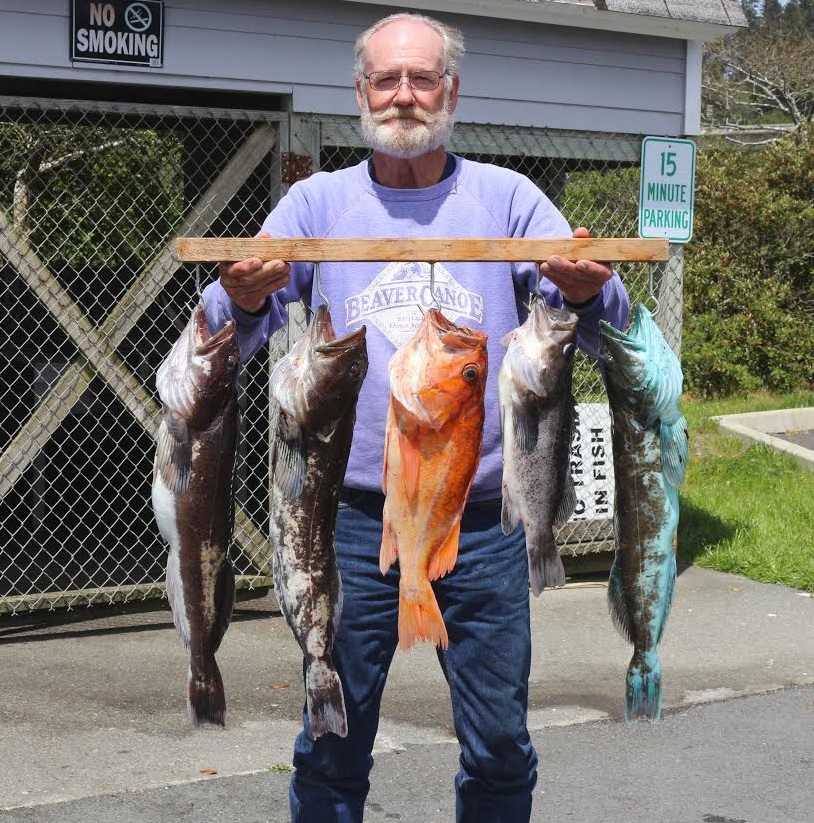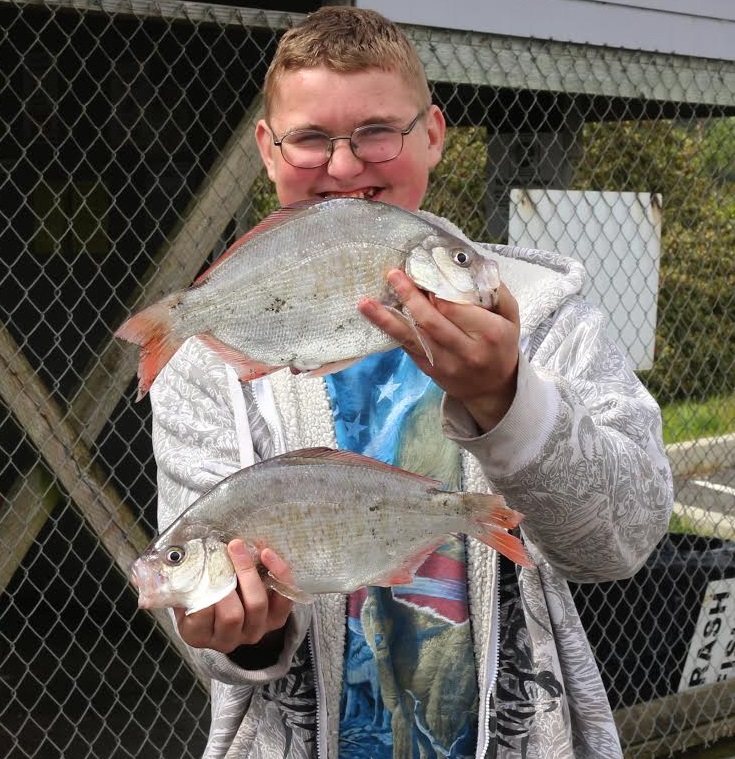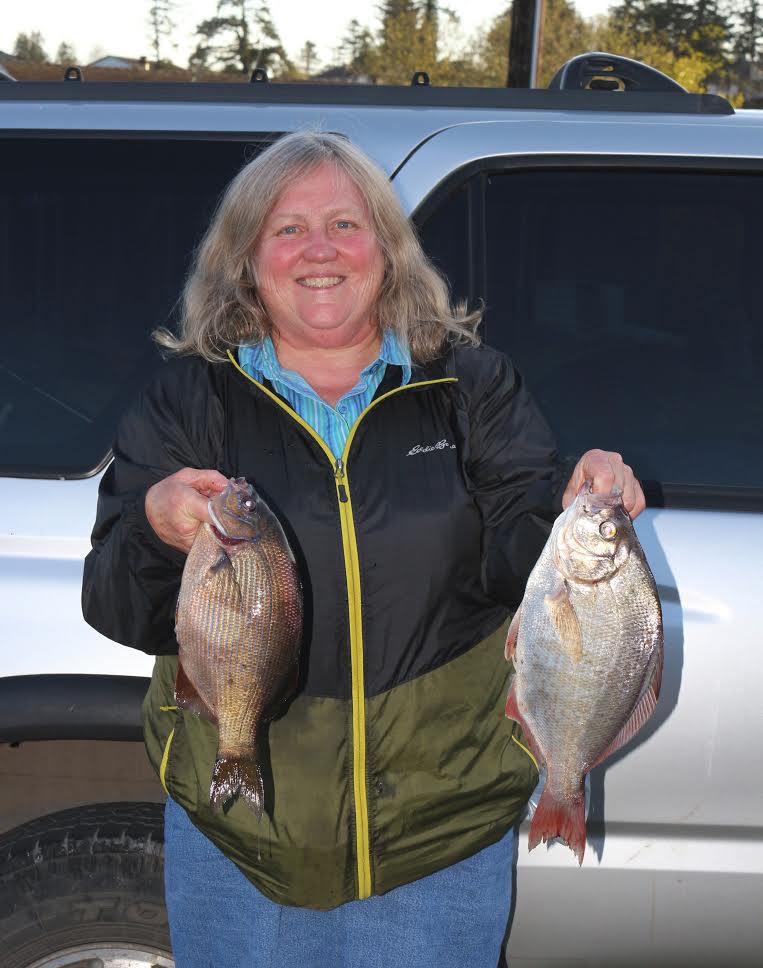Saltwater Fish Report for 5-6-2017
Descending devices now required for Oregon halibut fishermen
Port of Brookings Harbor - Brookings, OR (Curry County)

by Larry Ellis
5-6-2017
Website
The Pacific halibut season in the Southern Oregon Subarea (SOS) from Humbug Mountain south to the Oregon/California border started last Monday, May 1, and will continue through October 31, or until the quota of 10,039 pounds of dressed-weight halibut is attained, whichever comes first.
With a little bit of luck and moderate seas, anglers may even get a chance or two this weekend and the following week to slay that fatted flattie.
But the biggest news this season is the requirement of having a functional descending device on board your vessel when fishing for Pacific halibut in ocean waters off of the state of Oregon. Anglers should also be prepared to use these devices.
In other words, a functional descending device should be ready to be deployed by either a rod-and-reel device or by some other hand-line method such as using tuna cord or nylon rope.
That decision was made at an Oregon Fish and Wildlife Commission meeting held in Klamath Falls on April 21. The new regulation states that it is mandatory to have a functional descending device onboard the vessel when fishing for Pacific halibut, and to use the device when releasing any rockfish species when fishing outside of 30 fathoms.
The OFWC meeting document also goes on to say:
"Upon request, a descending device shall be presented for inspection by any person authorized to enforce wildlife laws or a representative of the Department."
This year, ODFW has further defined a functional descending device as "one that is ready to be used."
So the burning question is exactly how far back to the bottom should anglers release these incidental catches of rockfish, and how much weight is required to get these big floaters back to the bottom?
Based on personal experience, come prepared to use between 3 and 5 pound cannonball sinkers attached to these descending devices. Getting the fish back to its original catch depth is always the best way of insuring a fish's survival that has suffered from severe barotrauma. That might be a walk in the park when fishing the SOS in 220- to 300-foot water depths.
But the further north you go in the state, sport fishing vessels will fish considerably deeper, with some halibut grounds off of Garibaldi easily falling in the 100-fathom range (600-feet deep).
So whether you are fishing in the SOS or other areas of Oregon, ODFW recognizes that getting a rockfish back down to its original catch depth is not always a practical consideration. They therefore recommend releasing your catch at a minimum of 100 feet.
"Ideally you want to get your rockfish back to the bottom but we have to be realistic," says Lynn Mattes, Oregon halibut project leader. "So we recommend using a minimum of 100 feet of line. At 100 feet down, that changes the atmospheric pressure by a little over 2 atmospheres on the fish, and it's got a better chance of going back to the bottom on its own."
For releasing rockfish in very deep water, I recommend using one of two terrific descending devices.
The modified Fish Grip (thefishgrip.net; $14.95) has the capability of releasing rockfish at their original catch depth. ODFW has a terrific web page that shows exactly how to modify the Fish Grip. Visit dfw.state.or.us/MRP/recompression/docs/FishGrip_HowToMake.pdf.
The SeaQualizer (theseaqualizer.com; $59.99) can be set to automatically release a fish at 150 feet. As soon as the fish is lowered to 150 feet, the jaws of the device open up and release the fish.
Remember that anglers are also required to carry a functional descending device when fishing for bottomfish such as rockfish, kelp greenling and lingcod. Last week, fishing for bottomfish out of the Port of Brookings Harbor has been totally off the charts.
At this time, anglers are not allowed to fish for bottomfish in water deeper than the 30-fathom curve through the month of September.
Unlike the rest of the Oregon coast, SOS halibut anglers can still continue to fish for and retain rockfish and lingcod, as long as they are fishing shallower than the 30-fathom curve.
"In the Southern Oregon Subarea, the halibut regulations are different than the Columbia River and the central coast," notes Mattes. "So you can have both Pacific halibut and bottomfish on the same trip, but only in areas that are open for bottomfish. So if you want to fish for halibut at 42 fathoms and you want to fish for bottomfish on the same trip, you need to fish for halibut first and then come inside of 30 fathoms to fish for bottomfish."
And even though the regulations do not require releasing rockfish inside of 30 fathoms, Mattes recommends that descending devices be used on any rockfish suffering from symptoms of barotrauma even if you are fishing inside the 30-fathom curve.
Tight lines!
Larry Ellis, author, writer, columnist and photographer has had a 50-year passion for fishing in California and Oregon's saltwater and freshwater venues. He is a well-known writer for Oregon, Washington and California Fishing and Hunting News, Northwest Sportsman, California Sportsman and Pacific Coast Sportfishing. He currently writes monthly for Salmon Trout Steelheader Magazine, and is the author of two books, "Plug Fishing for Salmon" and "Buoy 10, the World's Largest Salmon Run." Both books can be bought from Amato Publications (amatobooks.com), Amazon and eBay. Ellis particularly loves living in his hometown of Brookings, Oregon - The heart of salmon country and gateway to fishing paradise.
More Reports
High water and snowpack spells springers
Rogue River- Lower
4-29-2017
Many years ago, an ODFW biologist was explaining to me about the subtle nuances of predicting how good a springer...... Read More
Oregon free fishing weekend

4-22-2017
Today and tomorrow, April 22 and 23 marks the first of four free-fishing weekends that Oregon will be hosting this year. On all free...... Read More

Website Hosting and Design provided by TECK.net